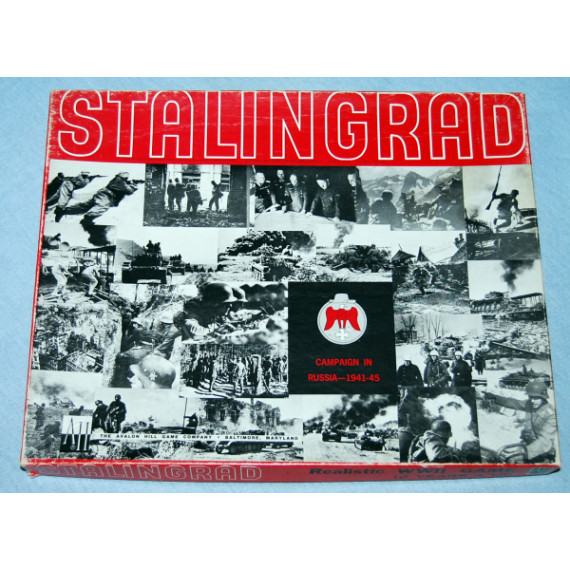Stalingrad - Campaign in Russia Board Game by Avalon Hill (1963)
Stalingrad - Campaign in Russia Board Game by Avalon Hill (1963)
| Brand: | Avalon Hill |
| Product Code: | A334 |
| Availability: | 1 |
-
£45.00
Stalingrad - Campaign in Russia Board Game by Avalon Hill (1963)
This is a classic Game that was released in 1963 and was a break through in War Gaming that has stood the test of time ,
The Game covers the historical Battle for Stalingrad that was a battle of principle for holding this City by Stalin and Hitler.
This is often classed as Hitlers big mistake as he demanded that Stalingrad should be taken and gave masses of troops and equipment which finally ended in some places hand to hand combat and was a brutal Battle which the Germans finally lost.
The rules are easy to learn but the strategies are extremely deep. Stalingrad is by far the most thoroughly and deeply analyzed board war game. Furthermore, the game preserves interest for players at a wide range of levels. Stalingrad is a good game to use to introduce players to hex-based war games.
Stalingrad uses a move-combat sequence, alternating between players. There is limited advance (one hex) or retreat (two hexes) after combat. Units have one-hex thick zones of control; movement directly from one hex in the zone of control of a unit into an adjoining hex of the zone of control of the same unit is not allowed. Functional terrain includes swamp (one hex per turn movement), mountains (one hex per turn movement, defenders are doubled), major cities (defenders doubled), rivers (defenders behind rivers are doubled if attacked only across the river), railroads (ten hex movement bonus, must be taken all at once), lakes (impassible). Weather is good in summer, snow in winter, and governed by a table in the spring and fall. Mud halves ground movement. Snow halves ground and rail movement, and freezes (converts to clear terrain) some swamps, rivers, lakes, and oceans. Combat is mandatory between units that are adjacent at the end of each turn, but the attacker chooses which units attack which other units, so long as all adjacent units are in some battle. The classical Avalon Hill D6 table, with results such as D Elim, A Elim, etc is in use. Germans have limited replacements; Russian replacement rates escalate as the game goes on. The objective is to capture the opposition's key cities (for the Russians, Leningrad, Moscow, Stalingrad) or to destroy the other side's army. The Russian (implicit in rules) can also win by taking Helsinki, Warsaw, and Bucharest, and holding them for two complete turns,
The Game is for 2 Players , Aged 12 Years to Adult
The Game is Complete and the Contents are in Very Good Condition for its Age.
The Box is also in Very Good Condition for its Age


